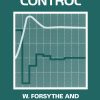AP r Microeconomics Crash Course Book Online 1st edition by David Mayer ISBN 0738669660 9780738669663
$70.00 Original price was: $70.00.$35.00Current price is: $35.00.
Instant download AP(r) Microeconomics Crash Course Book Online (Advanced Placement (AP) Crash Course) Wei Zhi after payment
AP(r) Microeconomics Crash Course Book Online 1st edition by David Mayer – Ebook PDF Instant Download/Delivery: 0738669660, 9780738669663
Full download AP(r) Microeconomics Crash Course Book Online 1st edition after payment

Product details:
ISBN 10: 0738669660
ISBN 13: 9780738669663
Author: David Mayer
REA’s Crash Course for the AP® Microeconomics Exam – Gets You a Higher Advanced Placement® Score in Less Time Crash Course is perfect for the time-crunched student, the last-minute studier, or anyone who wants a refresher on the subject. Are you crunched for time? Have you started studying for your Advanced Placement® Microeconomics exam yet? How will you memorize everything you need to know before the test? Do you wish there was a fast and easy way to study for the exam AND boost your score? If this sounds like you, don’t panic. REA’s Crash Course for AP® Microeconomics is just what you need. Our Crash Course gives you: Targeted, Focused Review – Study Only What You Need to Know The Crash Course is based on an in-depth analysis of the AP® Microeconomics course description outline and actual AP® test questions. It covers only the information tested on the exam, so you can make the most of your valuable study time. Our easy-to-read format gives you a crash course in: basic economic concepts, consumer choice theory, supply and demand, production and costs, and more. The author also includes must-know key terms all AP® students should know before test day. Expert Test-taking Strategies Our experienced AP Microeconomics teacher shares detailed question-level strategies and explains the best way to answer the multiple-choice and free-response questions you’ll encounter on test day. By following our expert tips and advice, you can boost your overall point score! Take REA’s FREE Practice Exam After studying the material in the Crash Course, go to the online REA Study Center and test what you’ve learned. Our free practice exam features timed testing, detailed explanations of answers, and automatic scoring analysis. The exam is balanced to include every topic and type of question found on the actual AP® exam, so you know you’re studying the smart way. Whether you’re cramming for the test at the last minute, looking for extra review, or want to study on your own in preparation for the exams – this is the study guide every AP® Microeconomics student must have. When it’s crucial crunch time and your Advanced Placement® exam is just around the corner, you need REA’s Crash Course for AP® Microeconomics! About the Author David Mayer earned his B.S. in Economics from Texas A&M University and his M.Ed. in Educational Psychology from the University of Texas at San Antonio. Mr. Mayer has had an extensive career teaching economics to high school students. Since 2004, more than 400 of his students have earned college credit on the AP® Economics exams. In addition to his work in the classroom, Mr. Mayer serves as an AP® Economics consultant for the College Board and is an AP® Economics Reader and Table Leader for Educational Testing Service. He has also written several economics books and test preps. Currently Mr. Mayer teaches AP® Economics at the Winston Churchill High School in San Antonio, Texas and acts as professional mentor to new AP® Economics teachers.
AP(r) Microeconomics Crash Course Book Online 1st Table of contents:
PART I – INTRODUCTION
Chapter 1 – How to Score Well on the AP Microeconomics Exam
Know the Exam Background
Know the College Board’s Course Outline
Know When to Guess in the Multiple-Choice Section
Know the Importance of Diagrams in the AP Microeconomics Course
Study the Released Exams
Know This Book!
Chapter 2 – Key Terms
I. Basic Economic Concepts
II. Demand and Supply
III. Theory of Consumer Choice
IV. Production and Costs
V. Perfect Competition
VI. Monopoly
VII. Monopolistic Competition
VIII. Oligopoly
IX. Factor Markets
X. Market Failures and the Role of Government
PART II – KEY CONTENT REVIEW
Chapter 3 – Basic Economic Concepts
I. Scarcity, Choice, and Opportunity Cost
II. Production Possibilities Curve
III. Trade
IV. Economic Systems
V. Marginal Analysis
Chapter 4 – Demand and Supply
I. Market Equilibrium
Chapter 5 – Consumer-Choice Theory
I. Utility Maximization and the Utility Maximizing Rule
Chapter 6 – Production and Costs
I. Firms
II. Costs in the Short Run
III. Costs in the Long Run and Economies of Scale
IV. Cost-Minimizing Input Combination
Chapter 7 – Perfect Competition
I. Profit
II. Profit Maximization
III. Perfect Competition
Chapter 8 – Monopoly
I. What is a Monopoly?
II. Sources of Monopoly Power
III. Demand, Marginal Revenue, and Monopoly
IV. Profit Maximization in Monopoly
V. Inefficiency and Monopoly
VI. Price Discrimination
VII. Natural Monopoly Revisited
Chapter 9 – Monopolistic Competition
I. What is Monopolistic Competition?
II. Monopolistic Competition in the Short-Run
III. Monopolistic Competition in the Long Run
Chapter 10 – Oligopoly
I. What is Oligopoly?
II. Collusion and Cartels
III. Modeling Oligopolistic Behavior
Chapter 11 – Factor Markets
I. What are Factor Markets?
II. Derived Factor Demand
III. Marginal Revenue Product
IV. Marginal-Factor Cost
V. Perfectly-Competitive Factor Markets
VI. Monopsony in the Factor Market
Chapter 12 – Market Failures and the Role of Government
I. Market Failures
II. Taxes
PART III – KEY GRAPHS AND FORMULAS
Chapter 13 – Key Graphs
I. The Production Possibilities Curve (PPC)
II. Supply and Demand
III. Price Ceilings
IV. Price Floors
V. Production Function
VI. Per-Unit Cost Curves
VII. Perfect Competition
VIII. Monopoly
IX. Monopolistic Competition
X. Oligopoly
XI. Competitive Factor Market
XII. Monopsony in the Factor Market
XIII. Positive Externality
XIV. Negative Externality
XV. The Lorenz Curve
Chapter 14 – Key Formulas
I. Opportunity Cost
II. Marginal Analysis
III. Equilibrium, Surpluses and Shortages
IV. Consumer Surplus, Producer Surplus, Deadweight Loss
VI. Elasticity Formulas
VII. Utility Maximization Rule
VIII. Production Formulas
IX. Cost Formulas
X. Cost Minimizing Input Combination
XI. Profit
XII.Efficiency
XIII. Factor Market Formulas
XIV Market Failure Formulas
XV. Gini Coefficient
PART IV – TEST-TAKING STRATEGIES
Chapter 15 – Multiple-Choice Strategies
I. Think Like an Economist
II. Question Types on the AP Microeconomics Exam
III. General Tips
Chapter 16 – Free-Response Question Strategies
I. Think like an economist.
II. Free-Response Strategies
Economics Glossary
Notes
Welcome to REA’s Crash Course for AP Microeconomics
People also search for AP(r) Microeconomics Crash Course Book Online 1st :
ap microeconomics crash course pdf
ap microeconomics crash course
ap micro crash course
microeconomics crash course pdf
crash course ap economics
Tags: David Mayer, Microeconomics Crash, Book Online


